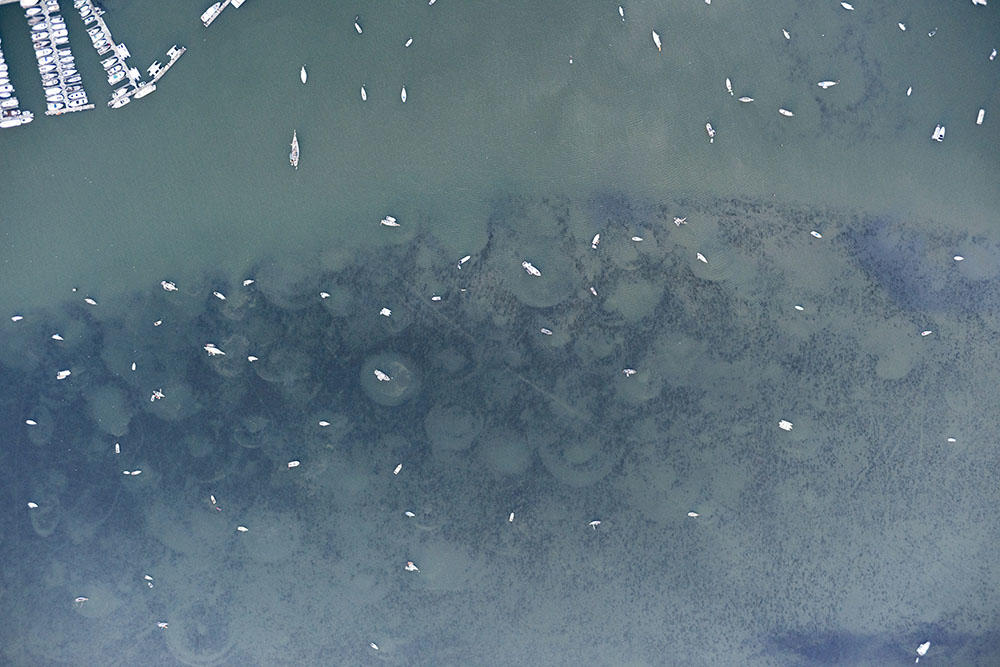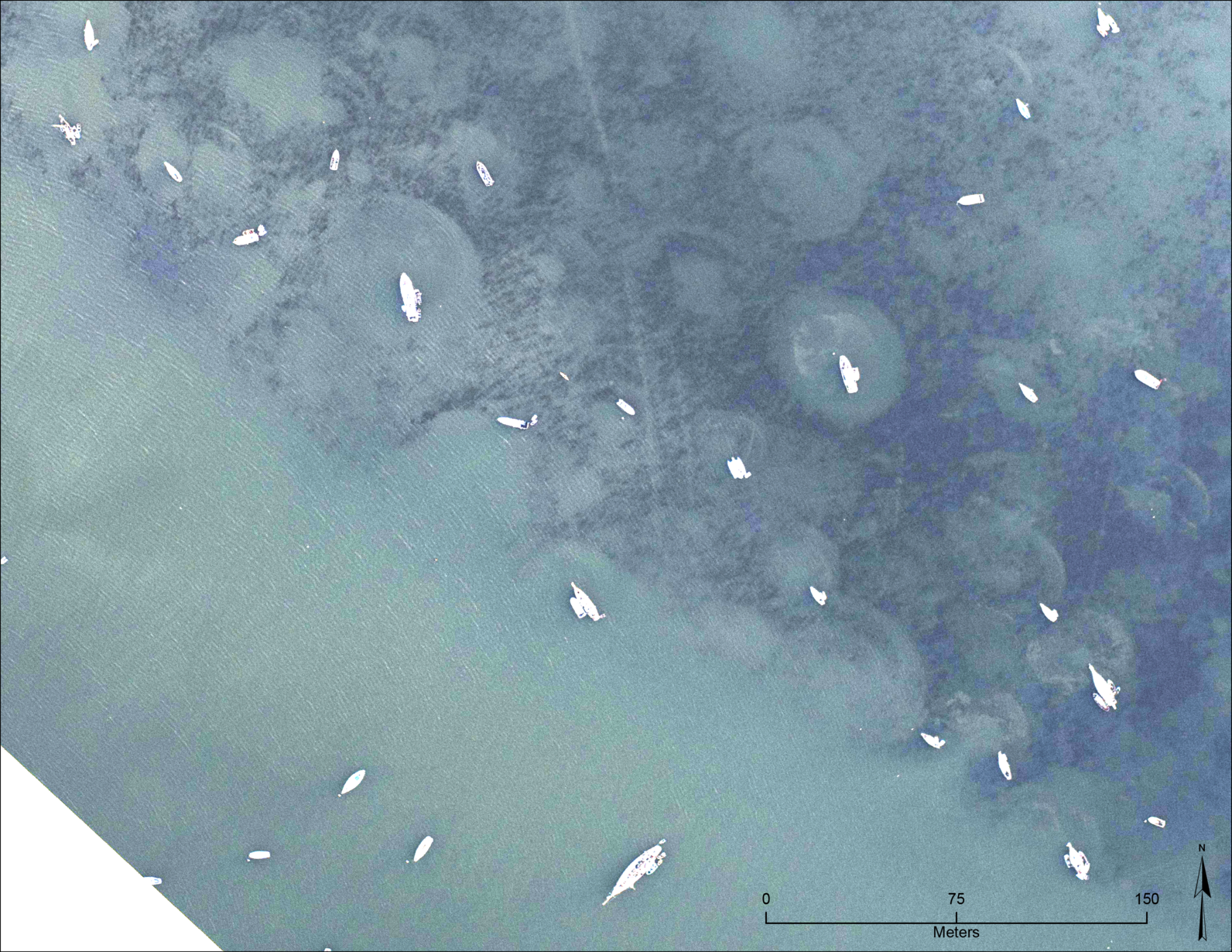
Ecological damage from private boats off Sausalito, many of which are anchored and moored illegally, has destroyed as many as 84 acres of increasingly rare eelgrass habitat in San Francisco’s Richardson Bay, according to a new study published by scientists with Audubon California. These new data, generated using aerial photography and geospatial mapping, contribute to an ongoing community discussion about how to address the growing population of so-called anchor-outs in these waters.
“It was startling to see that one boat can destroy an area of eelgrass about half the size of a football field,” said Julia Kelly, Audubon California’s San Francisco Bay Program Conservation Manager, who is the lead author of the study. “As local authorities try to tackle the complex issue of Richardson Bay’s anchor-outs, it will be important to have these conversations using scientific evidence.”
The full study in the journal Environmental Management can be accessed here.
Boats have anchored and moored in the calm protected waters of Richardson Bay off the shore of Sausalito since at least the 19th century. When the Bay’s eelgrass was healthy and the area’s urban population low, the impact of the anchoring was presumably minor. In recent years, the number of boats has increased rapidly – from about 90 boats in the early 2000s to a high of 240 boats in 2016. Some of these boats are well-kept sailboats and powerboats, others are barely sea-worthy and piled high with belongings. Others are essentially abandoned, often breaking free from their anchors during storms and washing up along the shores of Richardson Bay.
The anchors, chains, and other ground tackle from these boats directly damageseelgrass as they rotate with the ebb and flow of the tide. Though not analyzed in this study, the boats also have other impacts on the Bay’s ecology, as well as to public health and safety The boats reduce the available surface area on the water, squeezing out space for birds to rest and forage. They also impact water quality when boats fail to use pump-out facilities for disposing onboard sewage or when derelict boats leak oil and fuel into the Bay. The boats can even threaten the local community’s safety when they break loose and run aground.
The new study determined that between 25 and 41 percent of the area’seelgrass bed has been damaged by this inappropriate use of the Bay. Particularly startling was aerial photography that documented how the boats’ ground tackle clears out a circle of eelgrass around each vessel.
“You really can’t see these ‘crop circles’ from water level, you need a drone or an airplane” added Kelly, who has a PhD in geography, with a specialization in avian ecology and conservation biology. “Seeing the impact on this natural resource should help the community move forward in a well-informed manner.”

Eelgrass is widely known to be crucial food for birds such as Black Brant, and it provides habitat for fish and crustaceans that in turn feed a wide array of waterbirds, such as Surf Scoter, and support commercial fisheries like Pacific Herring. For many reasons – including dredging, coastal development, climate change, and aquaculture– California’s invaluable eelgrass beds have declined throughout the state, prompting the California Department of Fish and Wildlife to declare eelgrass a protected habitat, and highly regulate any activity that might threaten it.
San Francisco Bay’s large eelgrass beds contribute to its beauty, but they also provide nurseries for Pacific herring and support wintering waterbirds and other wildlife. Eelgrass, herring, and waterbirds are inextricably entwined in this fragile urban ecosystem. While half of the state’s remaining eelgrass is now found just within San Francisco Bay, it is also in steep decline here. More than 900 acres of eelgrass were lost in San Francisco Bay between 2009 and 2014. This represents a 25% loss of total eelgrass cover, with an even higher percentage lost in Richardson Bay.
In recent months, the Richardson Bay Regional Agency (the joint powers authority with jurisdiction over the bay) has begun looking at opportunities to move anchoring opportunities to a different section of the Bay, away from the eelgrass beds, and potentially transition the existing boats onto fixed moorings. These moorings will be regulated more closely, with requirements for seaworthiness and occupancy.
About Audubon California
Audubon California is building a better future for California by bringing people together to appreciate, enjoy and protect our spectacular outdoor treasures. With more than 350,000 members and supporters in California and an affiliated 48 local Audubon chapters, Audubon California is a field program of the National Audubon Society. More information is available at ca.audubon.org.



